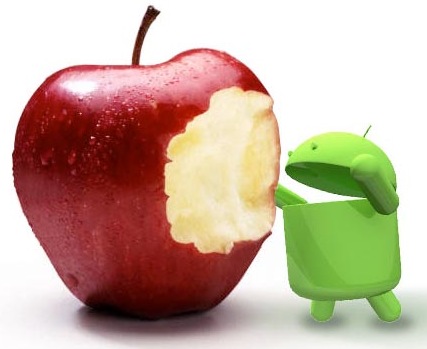Major international companies are increasingly looking to move into emerging markets to turn a greater profit, and the manufacturers of smartphones and tablets are no exception. Considerable improvements in telecommunications infrastructure, particularly in the rapidly developing BRIC countries (Brazil, Russia, India, China), have made large scale roll-out of desirable gadgets a real
possibility.
In this respect, it has to be said that Android handsets and tablets are leading the charge. New market data suggests that Android’s smartphone market share in Brazil has more than doubled in the last year to 47%, leaving Apple iOS devices in the shade at a paltry 6.2%. In India, the data speaks for itself – Android phones accounted for 68.1% of all sales in the second quarter of 2012, up from 46.9% in the same quarter last year.
These statistics, of course, should not be taken at face value: there are over 200 Android devices currently available, and only a handful that run Apple’s iOS. Yet this is not as a large a distorting factor as it would first seem: competition in these markets is primarily between operating systems, and then between device models. The overall picture therefore is clear – for now, Android rules, with Apple’s market strongholds remaining in the United States and the UK.
The most obvious reason is price. Even in the US and UK, Android handsets can be significantly cheaper than iPhones, but the price gap is vastly wider in, for instance, Brazil, where the cheapest Android devices are on sale for a tenth of the price of those running iOS. Cost is obviously a pressing concern in emerging markets, where rising incomes are still unevenly distributed; Apple products
are pitched primarily as desirable items in themselves, designer products for those with a certain amount of disposable income.
The less affordable aspect of Apple devices has much to do with how the company operates – its ‘walled garden’ approach, vetting everything from hardware components, to core software (iOS) and individual apps. This has advantages – including the much vaunted stability of Apple computers compared with Windows PCs – but these ‘gardening’ tasks necessarily increase business overheads.
In developed countries, compensation for the price differential is often provided in the form of legitimate company expense claims for Apple products, reducing the cost to the end-user dramatically. For the average Brazilian or Indian, such financial strategies are less readily available, and buying an Android tablet – at a much more reasonable price – is the only feasible option.
It should be noted, however, that a declining market share for Apple partly conceals a considerable rise in actual units shifted. iOS devices are still making a great deal of money in emerging markets, because those markets remain, even now, relatively untapped. A serious challenge to Android’s dominance in emerging markets would only occur, however, in the unlikely event that Apple changes its business model, or a serious shift in the income structure of economically developing countries takes place.













